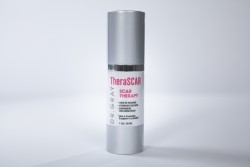SCARS
Skin is the largest organ of the body. The purpose of skin is to keep the body covered keeping the “IN” in and the “OUT” out. Skin is similar to a fine coat of Armor protecting valuable assets. Just one small tear in the skin can make a big difference in how it appears. Any burn, injury, or other trauma, such as surgery, or diseases can cause a scar.
How Does Scarring Happen?
Scarring is a natural part of the healing process after an injury. Its appearance depends on multiple factors. The depth and size of the wound or cut and the location of the injury matter. How the injury was created whether it was a cut, thermal or chemical injury. Age, genetics, gender and ethnicity all play a role. The most important factor is what you do next after the injury!
The real name of a scar is Fibrin Glue. The body will deposit this substance on each side of the injury. If an injury is larger more Fibrin Glue is needed to close the wound thus this may lead to a wider scar. All human beings produce the same chemicals. Therefore, all humans produce Fibrin Glue. The difference between human beings is not the substance we create but rather, how much we create. The goal of any treatment of scars is to produce the most optimal scar if you have to have a scar and if possible hide the appearance of a scar.
The goal of Dr. Gray’s TheraSCAR Scar Therapy is to help a scar heal while the skin is healing. This is a very important first step in treating a scar.
What Are The Types of Scars?
Several different types of scars are possible when you heal. The question is which one will yours be? If you are interested in affecting the outcome of a scar, then you must influence the outcome of a scar BEFORE you heal!
Widened Scars: Where the body produces too much fibrin Glue causing the scar to widen Hypertrophic scars: Another subset of humans produces too much fibrin glue where the scar does not widen but the glue mounds to form a “speed bump” appearance or an elevation. These are raised scars but do not go beyond the boundary of the injury.
Keloid scar: These scars are the rarest of all scars. This occurs in a small subset of the population of humans. Because of reasons that remain unknown their body does not stop producing fibrin glue. As a result this scar continues to mound upward until the forces of gravity causes the scar to fall backward toward the body creating a “mushroom” type of appearance. Keloid scars are most common among people with dark skin.
Contracted scars: These scars tighten, shorten, constrict and pull the skin, which can impair your ability to move. Contracted scars may also go deeper, affecting muscles and nerves. Most common these occur from burns either chemical or Thermal.
Acne scars: If you’ve had severe acne, you probably have the scars to prove it. There are many types of acne scars, ranging from deep pits to scars that are angular or wavelike in appearance. Treatment options depend on the types of acne scars you have.
What Are Possible Treatments for Scars?
Scar treatments may include:
Surgical removal or treatment: There are many options to treat deeper scars depending on your particular case. These include skin grafts, excision, dermabrasion, lasers or surgery. In a skin graft, the surgeon uses skin from another area of your body. This is often used with people who’ve had burns. If you’ve got scarring that impairs function, surgery can help address the functional problems. If you’ve recently had surgery that has caused scars, it is best to wait at least one to two years before making a decision about scar treatment. Many scars fade and become less noticeable over time.
Injections: You may get steroid injections to treat scars that stick out, such as keloids or hypertrophic scars. Injections can be painful and have other complications.
Other types of injections, such as “fillers,” may be useful for some types of pitted scarring, although these are not usually permanent solutions.
TheraSCAR Scar Therapy: A non-invasive treatment of scars was created to aid the body in the development of the most optimal environment for skin healing. TheraSCAR produces effective and consistent healing amongst a variety of skin types. TheraSCAR should be applied to skin at the inception of an injury while mitigating the forces that would cause poor skin healing. “It’s like having a plastic surgeon in a bottle” Dr. Gray
Healing has never been easier! Go to TheraSCAR.com to order your scar therapy today
For a complimentary consultation with Dr. Gray call 248-538-3333 or visit www.anewyou.com



